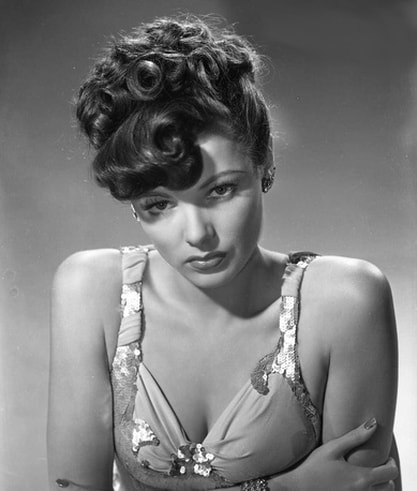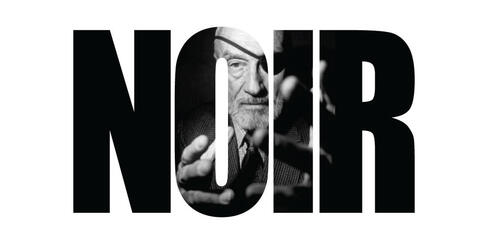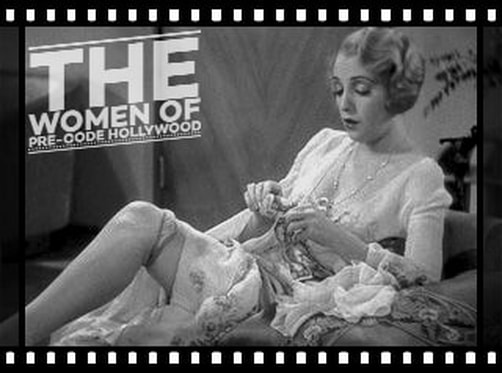GENE TIERNEY
AND FILM NOIR
Gene Tierney made significant contributions to the film noir genre during her career in the 1940s and early 1950s. With her striking beauty and talent, she brought depth and complexity to the femme fatale archetype, leaving a lasting impact on film noir.
One of Tierney's most notable film noir appearances was in "Laura" (1944), directed by Otto Preminger. In the film, she portrayed the title character, Laura Hunt, a woman whose murder investigation uncovers dark secrets. Tierney's performance as Laura showcased her ability to embody a complex and mysterious character. Her beauty and allure captivated audiences, while her portrayal of a femme fatale with hidden depths and conflicting emotions added layers of intrigue to the film.
In "Leave Her to Heaven" (1945), directed by John M. Stahl, Tierney delivered a standout performance as Ellen Berent Harland. Her portrayal of a possessive and manipulative woman driven to extreme measures was both chilling and compelling. Tierney's ability to convey a sense of obsession and psychological turmoil added depth to her character and elevated the film to a noir classic.
Tierney's talent for playing multifaceted and morally ambiguous characters extended beyond these two films. In "Whirlpool" (1949), directed by Otto Preminger, she played Ann Sutton, a woman who becomes entangled in a web of deception and manipulation. Tierney skillfully portrayed Ann's vulnerability and inner conflicts, enhancing the film's noir atmosphere.
While Tierney's filmography includes other genres, her performances in film noir demonstrated her ability to embody the essence of the genre. Her on-screen presence, beauty, and ability to portray complex and enigmatic women contributed to the atmospheric and psychological nature of film noir.
Overall, Gene Tierney's contributions to film noir showcased her range as an actress and her ability to bring depth and complexity to her characters. Her performances in films like "Laura," "Leave Her to Heaven," and "Whirlpool" continue to be celebrated as iconic examples of her work in the film noir genre.
One of Tierney's most notable film noir appearances was in "Laura" (1944), directed by Otto Preminger. In the film, she portrayed the title character, Laura Hunt, a woman whose murder investigation uncovers dark secrets. Tierney's performance as Laura showcased her ability to embody a complex and mysterious character. Her beauty and allure captivated audiences, while her portrayal of a femme fatale with hidden depths and conflicting emotions added layers of intrigue to the film.
In "Leave Her to Heaven" (1945), directed by John M. Stahl, Tierney delivered a standout performance as Ellen Berent Harland. Her portrayal of a possessive and manipulative woman driven to extreme measures was both chilling and compelling. Tierney's ability to convey a sense of obsession and psychological turmoil added depth to her character and elevated the film to a noir classic.
Tierney's talent for playing multifaceted and morally ambiguous characters extended beyond these two films. In "Whirlpool" (1949), directed by Otto Preminger, she played Ann Sutton, a woman who becomes entangled in a web of deception and manipulation. Tierney skillfully portrayed Ann's vulnerability and inner conflicts, enhancing the film's noir atmosphere.
While Tierney's filmography includes other genres, her performances in film noir demonstrated her ability to embody the essence of the genre. Her on-screen presence, beauty, and ability to portray complex and enigmatic women contributed to the atmospheric and psychological nature of film noir.
Overall, Gene Tierney's contributions to film noir showcased her range as an actress and her ability to bring depth and complexity to her characters. Her performances in films like "Laura," "Leave Her to Heaven," and "Whirlpool" continue to be celebrated as iconic examples of her work in the film noir genre.
AVAILABLE FILMS:
BLACK WIDOW (1954)
CHINA GIRL (1942)
DRAGONWYCK (1946)
HEAVEN CAN WAIT (1943)
IRON CURTAIN, THE (1948)
LAURA (1944)
LEAVE HER TO HEAVEN (1945)
LEFT HAND OF GOD, THE (1955)
NIGHT AND THE CITY (1950)
SECRET OF CONVICT LAKE, THE (1951)
SHANGHAI GESTURE, THE (1941)
TOBACCO ROAD (1941)
WHERE THE SIDEWALK ENDS (1950)
WHIRLPOOL (1949)
CHINA GIRL (1942)
DRAGONWYCK (1946)
HEAVEN CAN WAIT (1943)
IRON CURTAIN, THE (1948)
LAURA (1944)
LEAVE HER TO HEAVEN (1945)
LEFT HAND OF GOD, THE (1955)
NIGHT AND THE CITY (1950)
SECRET OF CONVICT LAKE, THE (1951)
SHANGHAI GESTURE, THE (1941)
TOBACCO ROAD (1941)
WHERE THE SIDEWALK ENDS (1950)
WHIRLPOOL (1949)
VIDEO TRIBUTE
Gene Tierney

Gene Tierney was an American actress born on November 19, 1920, in Brooklyn, New York. She is regarded as one of the most beautiful and talented actresses of Hollywood's Golden Age. Tierney's career spanned from the 1940s to the 1960s, and she starred in numerous acclaimed films.
After attending private schools, Tierney pursued a career in acting and made her Broadway debut in 1938. She caught the attention of film executives and signed a contract with 20th Century Fox in 1940. Tierney made her film debut in "The Return of Frank James" (1940), and though her role was small, her beauty and on-screen presence quickly garnered attention.
Tierney's breakthrough came with her role in "Laura" (1944), directed by Otto Preminger. She played the title character, Laura Hunt, in this iconic film noir. Her portrayal of a sophisticated and enigmatic woman drew critical acclaim, earning her a nomination for the Academy Award for Best Actress. "Laura" remains one of her most celebrated performances and solidified her place in Hollywood.
Throughout the 1940s, Tierney starred in a series of successful films, showcasing her versatility as an actress. She appeared in films like "Leave Her to Heaven" (1945), for which she received another Oscar nomination, "The Ghost and Mrs. Muir" (1947), and "Whirlpool" (1949). Tierney often portrayed complex, glamorous characters who hid dark secrets or struggled with inner turmoil, making her a sought-after actress for dramatic roles.
In addition to her dramatic performances, Tierney also displayed her comedic talents in films like "Heaven Can Wait" (1943) and "The Mating Season" (1951). She proved her ability to handle diverse roles, further showcasing her range as an actress.
Tierney faced personal challenges throughout her life, including struggles with mental health. She experienced a severe bout of depression and was institutionalized for a period in the late 1940s. Despite her personal difficulties, she continued to work in films and television, leaving behind a significant body of work.
In the 1950s and 1960s, Tierney transitioned to television and stage productions. She made occasional film appearances, including "Advise and Consent" (1962) and "The Pleasure Seekers" (1964). However, her focus shifted primarily to her personal life and raising her daughters.
Gene Tierney retired from acting in the late 1960s but remained a beloved figure in Hollywood. She published her autobiography, "Self-Portrait," in 1979, in which she candidly discussed her career, personal struggles, and triumphs.
Gene Tierney's contribution to cinema was marked by her exceptional beauty, grace, and talent as an actress. Her performances in films like "Laura" and "Leave Her to Heaven" continue to be celebrated and have left an indelible mark on the industry. Gene Tierney passed away on November 6, 1991, at the age of 70, leaving behind a legacy of memorable performances and her enduring status as a Hollywood icon.
After attending private schools, Tierney pursued a career in acting and made her Broadway debut in 1938. She caught the attention of film executives and signed a contract with 20th Century Fox in 1940. Tierney made her film debut in "The Return of Frank James" (1940), and though her role was small, her beauty and on-screen presence quickly garnered attention.
Tierney's breakthrough came with her role in "Laura" (1944), directed by Otto Preminger. She played the title character, Laura Hunt, in this iconic film noir. Her portrayal of a sophisticated and enigmatic woman drew critical acclaim, earning her a nomination for the Academy Award for Best Actress. "Laura" remains one of her most celebrated performances and solidified her place in Hollywood.
Throughout the 1940s, Tierney starred in a series of successful films, showcasing her versatility as an actress. She appeared in films like "Leave Her to Heaven" (1945), for which she received another Oscar nomination, "The Ghost and Mrs. Muir" (1947), and "Whirlpool" (1949). Tierney often portrayed complex, glamorous characters who hid dark secrets or struggled with inner turmoil, making her a sought-after actress for dramatic roles.
In addition to her dramatic performances, Tierney also displayed her comedic talents in films like "Heaven Can Wait" (1943) and "The Mating Season" (1951). She proved her ability to handle diverse roles, further showcasing her range as an actress.
Tierney faced personal challenges throughout her life, including struggles with mental health. She experienced a severe bout of depression and was institutionalized for a period in the late 1940s. Despite her personal difficulties, she continued to work in films and television, leaving behind a significant body of work.
In the 1950s and 1960s, Tierney transitioned to television and stage productions. She made occasional film appearances, including "Advise and Consent" (1962) and "The Pleasure Seekers" (1964). However, her focus shifted primarily to her personal life and raising her daughters.
Gene Tierney retired from acting in the late 1960s but remained a beloved figure in Hollywood. She published her autobiography, "Self-Portrait," in 1979, in which she candidly discussed her career, personal struggles, and triumphs.
Gene Tierney's contribution to cinema was marked by her exceptional beauty, grace, and talent as an actress. Her performances in films like "Laura" and "Leave Her to Heaven" continue to be celebrated and have left an indelible mark on the industry. Gene Tierney passed away on November 6, 1991, at the age of 70, leaving behind a legacy of memorable performances and her enduring status as a Hollywood icon.
Quotes:
"Jealousy is, I think, the worst of all faults because it makes a victim of both parties."
"It was the fashion of the time, still is, to feel that all actors are neurotic, or they would not be actors."
"Movie failures are like the common cold. You can stay in bed and take aspirin for six days and recover. Or you can walk around and ignore it for six days and recover."
"Children don't understand about people loving each other and then suddenly not."
"Nothing strengthens a woman's determination to be in love quite so much as being told that she cannot."
- Gene Tierney
Trivia:
Her first daughter was born intellectually disabled because Gene had contracted rubella (aka German measles) during her only appearance at the Hollywood Canteen. This served as the uncredited inspiration for the plot of the 1962 Agatha Christie novel and later movie The Mirror Crack'd (1980).
Darryl F. Zanuck, founder of 20th Century-Fox, said she was unquestionably the most beautiful woman in movie history.
Howard Hughes provided the funds for her daughter's medical care.
Had her share of love affairs during her Hollywood reign, including a notorious one with John F. Kennedy, whom she met while filming Dragonwyck (1946). Kennedy broke this up because of his political aspirations. She also had dalliances with Tyrone Power during production of The Razor's Edge (1946) and with Prince Aly Khan in the early 1950s.
Was in the throes of suicidal depression and admitted to the Menninger Clinic in Topeka, Kansas on Christmas Day 1957 after police talked her down from a building ledge. She was released from Menninger's the following year.
When she saw herself on screen for the first time, she was horrified by her voice ("I sounded like an angry Minnie Mouse"). She began smoking to lower her voice, but it came at a great price--she died of emphysema.
Darryl F. Zanuck, founder of 20th Century-Fox, said she was unquestionably the most beautiful woman in movie history.
Howard Hughes provided the funds for her daughter's medical care.
Had her share of love affairs during her Hollywood reign, including a notorious one with John F. Kennedy, whom she met while filming Dragonwyck (1946). Kennedy broke this up because of his political aspirations. She also had dalliances with Tyrone Power during production of The Razor's Edge (1946) and with Prince Aly Khan in the early 1950s.
Was in the throes of suicidal depression and admitted to the Menninger Clinic in Topeka, Kansas on Christmas Day 1957 after police talked her down from a building ledge. She was released from Menninger's the following year.
When she saw herself on screen for the first time, she was horrified by her voice ("I sounded like an angry Minnie Mouse"). She began smoking to lower her voice, but it came at a great price--she died of emphysema.




